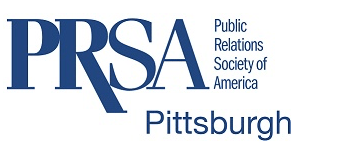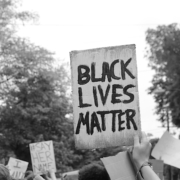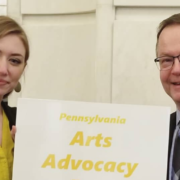By Megha Pai and Taylor Fife
PRSA Pittsburgh Social Media Co-Chairs
Social media can feel like a blessing and a curse — especially these days, when we’re drowning in information (and misinformation). Brands on social media in the midst of this global pandemic should focus on helping people and building communities — this isn’t the time to be slinging around salesy promotions.
Here are some social media best practices to keep in mind:
Keep Communicating, Transparently
Taylor: It’s important for a brand to keep connected with their community through the thick and thin, especially in the nonprofit sector. Social media provides a free and easy way for nonprofits to stay engaged with existing and prospective donors while keeping their missions in front of them.
- Think about the business relationship you’ve built with your consumers as you would a personal relationship. You wouldn’t want to leave your best friend in the dark, right?
- Think about what your audience needs. Update them on product availability and services and most importantly, communicate the measures your brand is taking to promote social distancing.
- Think about your digital presence. Create virtual offerings and be prepared to maintain a strong digital presence for several months.
Megha: I agree, virtual events help to fill a need people have during this time — the need to learn, connect and grow. PRSA Pittsburgh’s communications chair Ashley Jones began the “Screen to Screen” Instagram Live series soon after social distancing measures were implemented. (Check out tips from past episodes.)
It’s been a great way for our organization to continue providing programming and helpful information while everyone is apart. Additionally, while communicating with your audience, it’s important to do so authentically and transparently.
Taylor: Yes, transparency is important — if you don’t share the status of your company with consumers, you may lose their trust.
- You don’t want to come across as out-of-touch with reality. It’s always better to acknowledge a tough situation than to ignore it.
- You don’t want to deliver content that goes against what the Centers for Disease Control and Prevention (CDC) and World Health Organization (WHO) recommend, so be mindful of what you’re putting out there.
- You don’t want to come across as trying to profit off of these circumstances with pushy, disingenuous content. For PPC campaigns, tread lightly.
Megha: Yes, organic social content is your friend right now. Find out what your audience wants to see from your brand:
- Launch polls on Instagram Stories
- Ask questions on Twitter
- Get feedback using methods that work for you
Remember, your content should always be developed with your audience in mind.
Trust Credible Sources
Megha: It’s always important to consider the source, especially when you’re on social media. Here at PRSA Pittsburgh, we’ve created a resource page on our blog to help our members stay informed during this time. The CDC and WHO will always be go-to sources for anyone seeking credible information on the pandemic, but I also like local news outlet PublicSource.
Taylor: Yes, finding credible and trusted sources is key. Unfortunately, when using social media, people often fall victim to misinformation. Luckily, social media platforms like Facebook are aiming to tell users when they have interacted with “fake news” about the coronavirus.
Megha: They have, and I appreciate seeing social media platforms doing their part to help stop the spread of misinformation! Just look at TikTok, which puts a disclaimer on in-platform videos where users mention the coronavirus, urging viewers to consult credible sources. TikTok has also formed a partnership with WHO aimed at providing useful, accurate information for TikTok’s audience base.
It’s Time to Pivot
Megha: We both agree that pivoting is essential to a brand’s social presence during this time — you can’t keep creating your usual content in a vacuum, oblivious to something that’s affecting the entire world! But we know pivoting isn’t easy.
Taylor: Pivoting can be stressful and daunting because it takes you out of your comfort zone and may even force you to do more work than ever before.
Megha: Very true. Also, when we talk about pivoting here, we’re talking about two different things: 1) the goods/services themselves and 2) the content.
- If you have the capacity and ability to pivot what you’re producing or providing to others, great.
- If you can only pivot your messaging, that works, too.
Taylor: I view this time as an opportunity for innovation and growth. We’ve seen many companies stepping up, pitching in and taking on projects that are not in their traditional niche.
Megha: Yes — just look at the fashion designers making surgical masks! Local brands like Maggie’s Farm Rum are helping the Pittsburgh community by making hand sanitizer to donate to first responders.
Taylor: Organizations are also creating emergency response campaigns like #GivingTuesdayNow to help raise funds in this time of critical need.
Access is important in these times, too: Central Outreach Wellness Center, whose mission is to support the needs of the LGBTQIA and HIV+ community, tested thousands of people for COVID-19.
Ultimately, people will remember the acts of good that brands are performing during this crisis. Acts of service also turn into feel-good content that promotes positive messaging!
Megha: Yes, positive messaging will help us all get through this! Here are some example I like:
- Nike’s campaign about staying in, which says: “If you ever dreamed of playing for millions around the world, now is your chance. Play inside, play for the world.”
- Jeep’s #StayOffTheRoad campaign is also a great pivot that encourages fans to “Explore the great indoors.”
- Steel City’s sign that says “Tough Times Didn’t Break Us, They Made Us”
- The Byham Theater’s sign that says “This is just intermission.” What a great way to lift people’s spirits!
How Social Has Helped Us During This Time
Taylor: I eat, sleep and breathe social media. You’ll rarely ever NOT see me buried in my phone. Social media has been my main source of receiving information for years and that hasn’t changed during COVID-19. Every communicator should follow as many reputable local, national and international news media outlets as possible on social media (there’s my broadcasting degree coming out). Staying informed and knowledgeable about the world around me has been vital in helping me develop content during this time.
Megha: I agree, Taylor, and I love the content WHO has been publishing on its social channels. Lately, I’ve really appreciated how social media has helped me stay connected to everyone.
It’s also interesting that Zoom has practically become a social network, as observed by Matthew Kobach, Manager of Digital and Social Media at the NYSE. Before the pandemic, I associated Zoom with work, since I used it for client calls and internal meetings during my time at Havas. But the other day, I created a personal Zoom account and used it to talk to my former colleagues from Havas on a weekend. Life comes full circle.
Taylor: Social media has been my main source of entertainment these days, and I know Megha feels the same. Virtual happy hours, Instagram Live DJ parties, arts and crafts sessions, cooking sessions, webinars — there is so much creative content out there right now! My favorites are:
Megha: Yes! I love the comedy videos on TikTok, humor on Twitter and memes on Instagram. There’s a lot of interesting content out there — which is good for us, since consuming great content is key to writing and creating great content.
It’s an extremely challenging time to be working in communications right now, and there is no beginner’s manual. But here at PRSA Pittsburgh, we hope to help other communicators in the area make sense of it all by sharing our experiences with you.
Reach out to us on PRSA Pittsburgh’s social channels, or at meg.pai25@gmail.com and taylorfifemarketing@gmail.com, to let us know what content you’d like to see!











